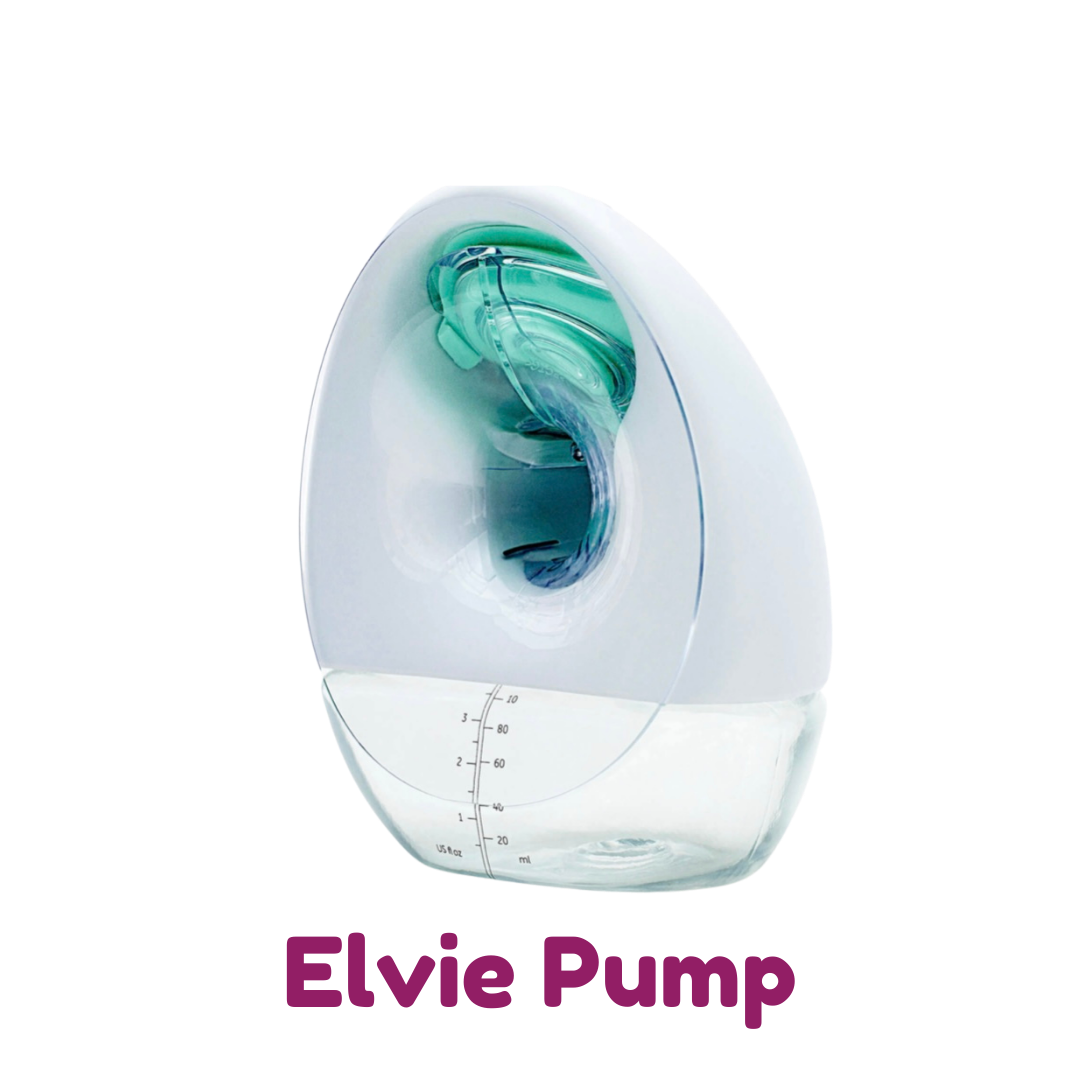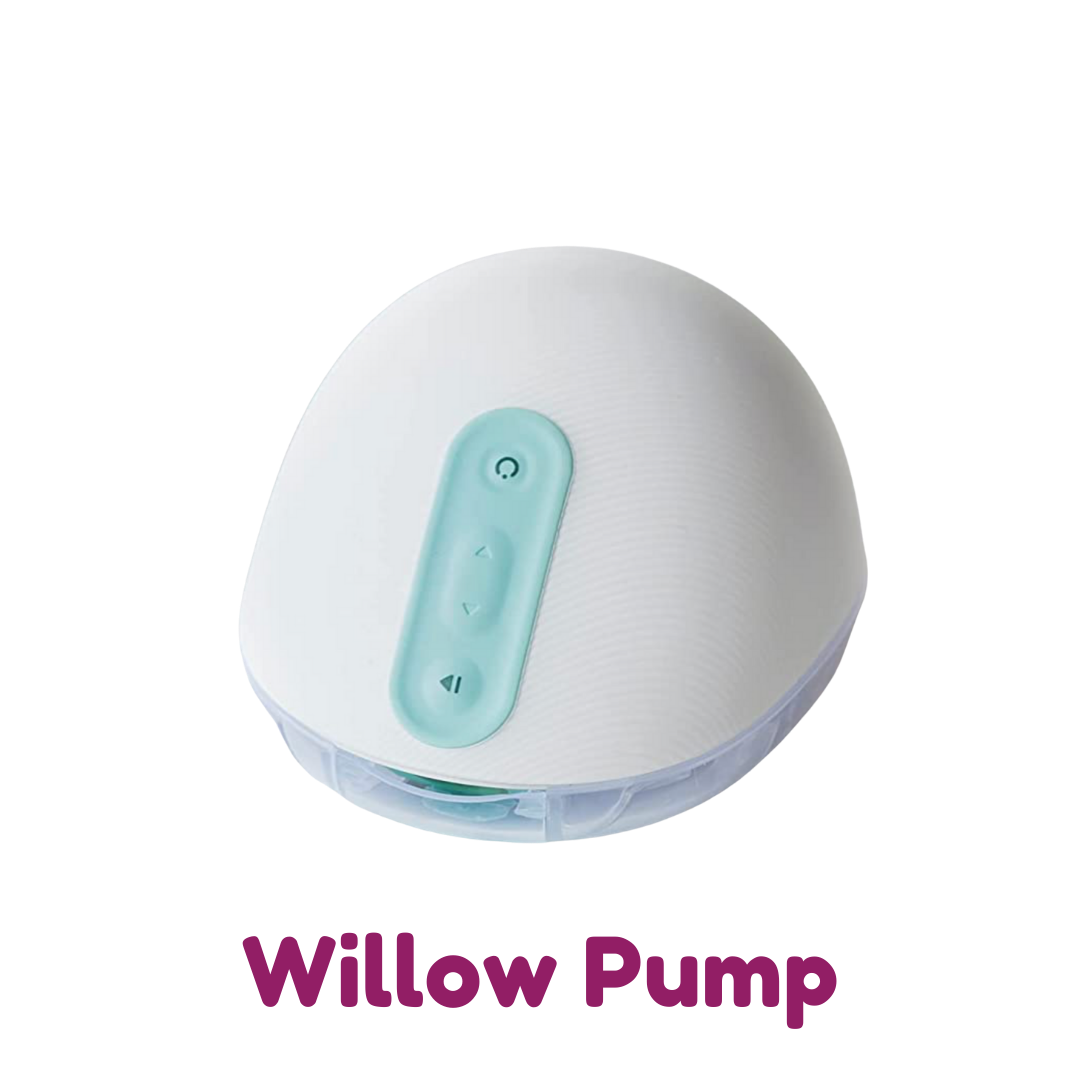FAQ’s about Wearable Breast Pumps!
Wearable pumps are breast pumps designed to be worn either in a nursing bra or hands-free pumping bra by a user. The goal may be to allow more mobility while pumping, more discrete pumping, or a combination of the two. Wearable pumps have been on the market for several years now, but the parental preference for these set-ups is increasing, and the market is constantly expanding.
Here are some of the top questions asked about wearable pumps to help you decide if these are the right options for you, and if they are, how you can optimize the use of these pumps!
Why do wearable pumps and cups need such precise sizing?
Wearable pumps and cups are notorious for requiring users to get a closely fit flange to make them work well. But, why?
Let me just start by saying I think all pumps really do require fairly precise sizing to work optimally. Just because stronger, more traditional pumps could function with flanges 8-10 mm bigger than nipple size without compromising pump function doesn’t mean that it wasn’t compromising milk supply with inefficient pumping. But wearable pumps absolutely positively require precise sizing to prevent the motor from being insufficient for milk removal or prematurely burning out.
What about these pumps makes this a concern?
Wearable pumps traded large, heavy duty motors for small compact motors that are less durable. This was the trade-off required to make the entire pump setup fit in your bra.
Poorly fitted flanges compromise the vacuum the pump can generate by requiring the user to use higher suction in order to trigger milk removal than they would need to with a smaller, more properly fitted flange. So, over time, with a poorly fitted flange, either the pump fails to remove your milk or you have to work the motor harder, and for longer periods of time, meaning your motor is likely to start dying sooner. With many of these wearable options costing hundreds of dollars, this is a serious concern, as parents need their investment to last as long as possible.
When flanges are properly fitted, parents find that they typically need lower suction on their pumps, and they need to pump for smaller amounts of time to remove their milk. Therefore, the wear and tear on these pumps is reduced, and they are more likely to remain usable for a longer period of time.
Are wearable pumps trickier to fit for flanges?
Yes and no. Traditional flanges may be a touch easier to fit because we can visualize the nipple moving in the flange which lets us assess in real time how that flange is fitting. Wearable pumps leave us without that ability, so we have to use a method of flange sizing that allows for targeting the right size to start with and then a system for troubleshooting that compensates for not being able to see.
Wearable pumps also tend to require more usage of inserts and hacks which requires the lactation consultant fitting the flanges to have a broad working knowledge of the various options to truly help you find that customized for you fit.
Without this knowledge base, even if a lactation consultant is otherwise incredible and highly skilled, they may fall short on helping support your needs with pumping with newer pumps that provide more freedom than traditional setups.
What wearable pump options exist?
The true definition of a wearable pump in my mind is a pump that enables the user to pump hands-free and can be operated without being plugged in to the wall. That means we have a wide variety of pumps that fall into this category along the spectrum of options available to parents.
On the most traditional end, we are looking at traditional pump flanges and bottles with a hands-free bra set-up and a battery operated breast pump.
Then, we have hands-free wearable cups attached to a battery operated breast pump. This is a more discrete way to pump for many parents, and depending on the pump they are using, they may be quite mobile. There is still tubing involved, but it can be routed under clothing easily for increased discretion and to prevent catching the tubing on things.
There are three types of wearable cups currently available in the US market. Freemie cups, Spectra cups, and Youha cups which may be rebranded and sold by Legendairy. These cups can be customized to size using silicone inserts.
The next option is a hybrid type of pump where a wearable style cup with a silicone flange is essentially attached to a motor that sits on top of it. These pumps are often internationally branded pumps imported and rebranded. Brand names vary, and the motors vary in terms of features.
The newest version of these hybrids to hit the market is the Onatural version where the motor has been modified to fit flush with the cups. These cups come in 24 and 28 mm silicone flanges with the ability to use silicone inserts to reduce sizing.
There are two high end luxury wearable pumps available on the market today.
The first of these pumps is the Elvie Pump. Elvie uses flanges and bottles that snap into the motor hubs and the entire unit fits in the bra. Elvie is the quietest and most discrete profile option available on the market. Elvie’s are the hardest of the wearable pumps on the market to customize for sizing, as unless you are a 21mm, 24mm, or 28mm, some type of hack will be required to change the size. Silicone inserts do not work as is for the Elvie due to flange length and design.
The Willow Pump is the other luxury wearable pump on the market. This pump uses a fairly unique constant suction pattern that requires precise sizing to prevent ineffective milk removal and nipple damage. Willow is the only leak-proof pump available today when used with their proprietary bags. They do have reusable containers available as well, but they do not function as well or reliably as many had hoped.
Why are wearable pumps so appealing if they are so much more complicated than traditional pumps?
Exclusively expressing milk with a breast pump is not an easy job. In fact, using a breast pump at all is not an easy job! In the early weeks, parents may often pump up to 8 times a day for 20-30 minutes each time for a total of 180-240 minutes a day. Then, add on the time required to clean the pump, wash the pump parts, prepare and wash bottles, and finally, actually feed the baby. It’s an intense labor of love, and wearable pumps can help reduce the burden on parents by allowing them to pump during other activities they would have been unable to do with the traditional pumps.
For working parents, pumping can be complicated with employers being unable or unwilling to actually accommodate their need to pump. Pumping with a traditional pump requires the parent to leave work for a period of 20-40 minutes, 2-3 times a day, to express their milk. Wearable pumps require the parent to leave to place their pumps, and then again to remove the pumps and clean up/store their milk. But with wearable pumps, they can continue working in between those two activities which means the burden of pumping at work is reduced.
Are wearable pumps as effective as the highest recommended traditional pumps?
The top pumps LC’s tend to recommend are either hospital grade rental pumps or strong consumer pumps like the Spectra and some Medela models. Wearable pumps currently don’t come close to the effectiveness of these pumps, but those pumps don’t come close to the freedom offered by wearable pump options. It’s a trade-off that has to be made, and as long as parents understand the risks and benefits of the different types of pumps, they are free to make the choice that’s right for them. It’s also important to note some parents respond perfectly well to the wearable pumps and may see better output due to less stress with pumping and the ability to pump regularly.







